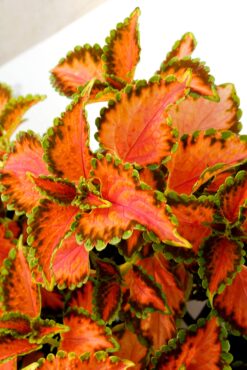
“She sprouted love like flowers, grew a garden in her mind, and even on the darkest days, from her smile the sun still shined.” ~ Erin Hanson
January is not just about resolutions. It is the beginning of a new year, new plants and new joy. Not sure the growing season has begun? Look at the mulched ground where you planted those daffodils last fall. The strappy, green shoots are most likely above ground by now or will peek out soon.
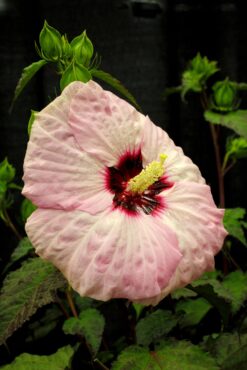
With a new season and everything reset to refresh, it’s time to set intentions for the year. Not just promises to lose a few pounds or stop cursing when you stub your toe — what important choices do you want to set for your life and the garden this year? Perhaps you want to promise to be kind to everyone you meet and be kind to your plants by watering them when they need it. Nurture those around you, and nurture nature by mulching the soil. Or maybe you want to cultivate new friendships and cultivate new green beings in the garden.
The lineup of new plants this year makes it easy to be excited about gardening. Breeders and growers bring exciting improvements, nurseries snatch up the best and gardens keep growing better. Here are a few that will make you garden lists longer while your plant intentions into your life.
Coleus with a Peachy Disposition
Plectranthus scutellarioides ‘Peach Julep’ is an upright annual with an exciting color. It adds new dimensions to containers as a stand-alone container plant or mixes with flowers and other foliage. It’s one of Terra Nova Nurseries’ largest growing coleus.
Although these are tender perennials, gardeners treat them as annuals and utilize them as bedding plants in the garden. The plants are popularly used in container gardens outdoors and houseplants inside. Slow to flower, the large peach foliage edged in mottled red and lime green fills the 14-inch plant.
- Plant type: Tender perennial treated as an annual
- Light: Shade to part shade
- Height and width: 14 inches by 12 inches
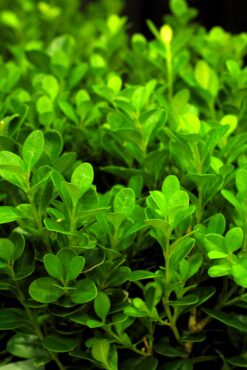
Rose Mallow — Hibiscus ‘Spinderella’
If you like Hibiscus ‘Tie Dye,’ you’ll love this improved Hans Hansen hybridized rose mallow ‘Spinderella,’ a belle-of-the-ball show-off for the late summer garden. The 8-inch-wide, pinwheel-patterned flowers top off the deep-green leaves with red-eyed, overlapping white petals with medium-pink swirls around the edges.
- Plant type: Shrub
- Light: Partial to full sun
- Height and width: 4 to 4.5 feet b 4.5 to 5 feet
Boxwood Blight Resistant Buxus ‘SB300’
With the fungus disease boxwood blight now rampantly spreading across the Northwest, resistant varieties become essential, especially when this disease can wipe out a hedge of boxwood, defoliating the shrub quickly.
Buxus ‘SB300,’ tradename NewGen Freedom, is a first-rate selection for formal plantings. It grows taller than wide as a specimen, with a uniform and tight growth habit and glossy green leaves. A mutation was found by J. Bennett Saunders and selected for its boxwood blight and leaf miner resistance. You will need to prune it, as the deer will not do it for you.
- Plant type: Shrub
- Light: Full sun
- Height and width: 3.5 feet
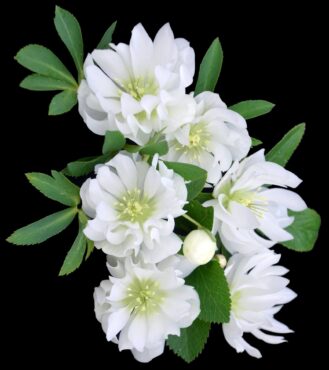
Helleborus ‘Crystalline’
How many plants do you know that allow you to go out into your garden in January or February, cut a fresh flower and bring it inside for a vase? Here’s a double-blossom, opalescent winter flower that is so white, it appears to glow. ‘Crystalline’ is a Lenten rose that you will want to plant this spring for next year’s winter wonderland.
The Terra Nova Nurseries introduction is relatively easy to grow yet needs well-drained soil to prevent black rot. The deer-resistant perennials grow best with a deep watering once a week during our annual drought. Aphids can occasionally be problematic, yet are easy to rinse off the leaves with water.
- Plant type: Perennial
- Light: Full sun to full shade
- Height and width: 13 inches by 17 inches
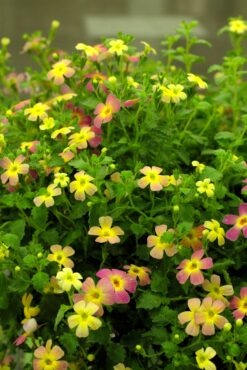
Jamesbrittenia Hybrid ‘Dawn’
Related to Sutera, the Jamesbrittenia hybrid from the Safari series shows more heat tolerance. Here in the Puget Sound basin, we never worried about extreme heat during the summer. However, after last year’s record-breaking heatwave that left many plants scorched, set back or dying, it might be time to include more heat-tolerant plants into our landscapes.
The lustrous, orange-pink flowers with yellow eyes cover the plant in an impressive show for hanging baskets, mixed containers and garden. Look for these lovely South African phlox this year for a refreshing change in your container designs.
- Plant type: Tender perennial
- Light: Part sun to sun
- Height and width: 6 to 12 inches by 12 to 24 inches
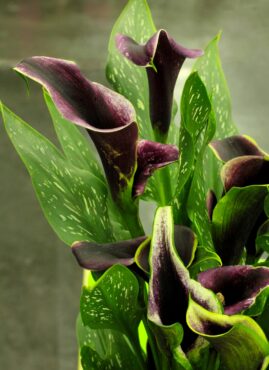
Zantedeschia ‘Dubai Night’
The calla lily flowers are called spathes. They last for 12 weeks before fading into obscurity, which means the blossoms also make excellent cut flowers with a long-lasting vase life. Even when they’re not in bloom, the spotted callas are a pleasing sight. Their tropical-like foliage has eye-catching translucent spots on their leaves.
The bulbs are hardy in the warmest parts of the Puget Sound basin. Yet they can also thrive as a houseplant in a sunny window in a room with good air circulation. Keeping the bulb pot bound encourages more blooms.
With calla lily as a common name, many believe that Zantedeschias are lilies. However, this plant is not a lily at all but a member of the exciting and quirky aroid family, comprised of arum and arisaemas, among others. Zantedeschia’s closest relatives are grown as popular houseplants, including philodendron, anthurium, spathiphyllum, caladium, dieffenbachia, monstera and aglaonema.
- Plant type: Bulb
- Light: Full sun
- Height and width: 18 to 24 inches by 9 to 12 inches
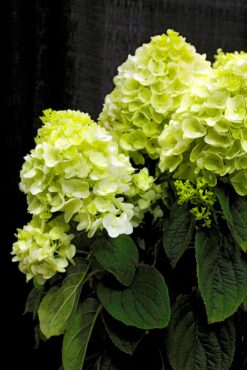
Hydrangea Paniculata ‘Bailpanone’
Those who love Hydrangea paniculatas in the garden but don’t have a lot of room for the full-size shrub will like the compactness of Little Hottie (registered tradename).
The Bailey Nursery introduction went through many trials to see how it would hold up to heat. When many hydrangeas suffered heat damage last year, this one suffered none.
The bush is well-branched, with strong stems that hold up the tight, large flowers covering the shrub from top to bottom. The flowers emerge green and eventually turn a crystal white and slowly fade to a soft pink in the fall.
- Plant type: Shrub
- Light: Part sun
- Height and width: 3.5 feet






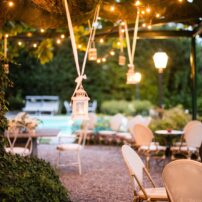
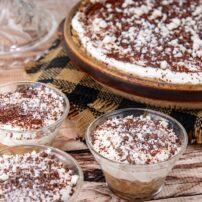
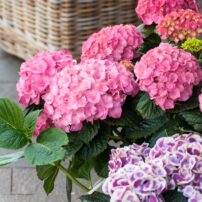








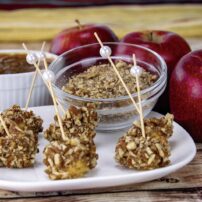












Comments